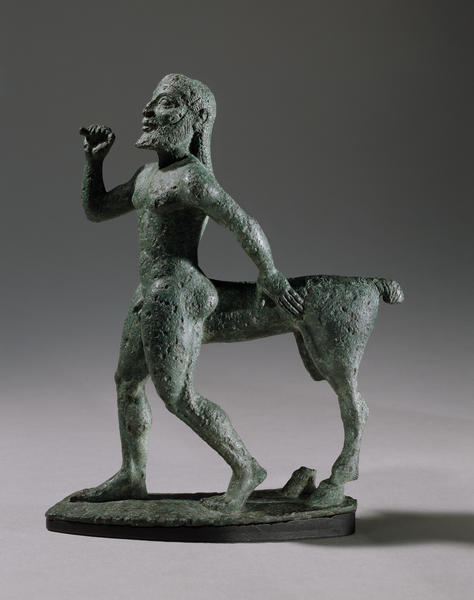ケンタウロス像
- ギリシア
- 前6世紀
- 青銅
- 所蔵
- 個人蔵
ケンタウロスは、西アジアの半人半馬の怪物がギリシア世界に採り入れられたもので、彼らの神話にも組み込まれた。このケンタウロス像はギリシアのアルカイック期のもので、台座が弧を描いていることから器の縁に付けられていたものと思われる。一方の腕を上げ何かを担ぎ、もう片方の手を馬身にあてる仕草は、アテネのアクロポリスからの出土例をはじめ同時期の青銅像にいくつかの類例が見出される。この像の右手には細いものが握られているが、木の枝であった可能性が高い。この仕草のケンタウロスはヘラクレスを歓待するために枝に獲物を提げる、温和で友好的なポロスの姿を連想させる。そのほほえみの表情からは陽気な歌声さえも聞こえてきそうである。
Catalogue Entry
The centaur is an imaginary half-human, half-horse creature that was incorporated into Greek mythology from West Asia. This centaur figure, from the Greek Archaic period, has an arc-shaped base, suggesting it originally fit into the rim of a vessel. The centaur’s pose, with one arm up to carry something and the other held back toward his flank, is seen in a number of similar bronze figures from the same period, including one unearthed from the Acropolis in Athens. What this figure gripped in his right hand was probably a tree branch. A centaur striking this pose is reminiscent of the mythic Pholos, the friendly centaur who entertained Hercules, offering him meat on a branch. From the smiling face of the present figure one can easily imagine him singing a cheery song.
